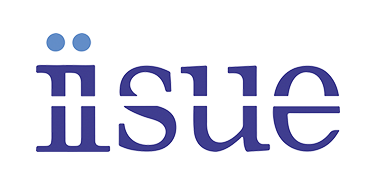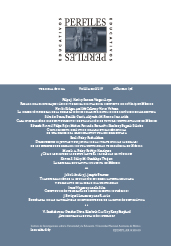Construcción temprana de conocimientos numéricos Una revisión sobre el uso de libros ilustrados durante la lectura compartida
Contenido principal del artículo
Resumen
Los libros ilustrados son una herramienta para promover la comprensión del número y de otros conceptos matemáticos. El propósito de este artículo es identificar y examinar las características de los libros numéricos (diseño y contenido) y su relación con los conocimientos que se despliegan durante la lectura conjunta entre niños y niñas preescolares y adultos (padres, docentes). Asimismo, el artículo revisa una serie de investigaciones empíricas sobre lectura y conocimientos numéricos (1992-2018) para caracterizar los libros empleados y analizar los resultados obtenidos en función de las propiedades del material. Esta revisión destaca algunas características de los libros que promueven la construcción conjunta de conocimientos numéricos en el hogar y la escuela: su carácter explícito, el empleo de distintas formas de representación, la presencia de colecciones de elementos concretos, delimitados, de igual tamaño, en disposiciones espaciales acordes a la actividad a propiciar y el uso de recursos narrativos o gráficos motivantes.
Descargas
Detalles del artículo
© 2025 Universidad Nacional Autónoma de México, Instituto de Investigaciones sobre la Universidad y la Educación. Este es un artículo Open Access bajo la licencia CC BY-NC-ND (http://creativecommons.org/licenses/by-nc-nd/4.0/).
Citas
Anderson, Ann, Jim Anderson y Jon Shapiro (2004), “Mathematical Discourse in Shared Storybook Reading”, Journal for Research in Mathematics Education, vol. 35, núm. 1, pp. 5-33.
Anderson, Ann, Jim Anderson y Jon Shapiro (2005), “Supporting Multiple Literacies: Parents’ and children’s mathematical talk within storybook reading”, Mathematics Education Research Journal, vol. 16, núm. 3, pp. 5-26.
Bus, Adriana G., Marinus H. Van Ijzendoorn y Anthony D. Pellegrini (1995), “Joint Book Reading Makes for Success in Learning to Read: A meta-analysis on intergenerational transmission of literacy”, Review of Educational Research, vol. 65, núm. 1, pp. 1-21.
Casey, Beth, Joanne Kersh y Jessica Young (2004), “Storytelling Sagas: An effective medium for teaching early childhood mathematics”, Early Childhood Research Quarterly, vol. 19, núm. 1, pp. 167-172.
De Smedt, Bert, Lieven Verschaffel y Pol Ghesquiere (2009), “The Predictive Value of Numerical Magnitude Comparison for Individual Differences in Mathematics Achievement”, Journal of Experimental Child Psychology, vol. 103, núm. 4, pp. 469-479.
Elia, Iliada, Marja Van den Heuvel‐Panhuizen y Alexia Georgiou (2010), “The Role of Pictures in Picture Books on Children's Cognitive Engagement with Mathematics”, European Early Childhood Education Research Journal, vol. 18, núm. 3, pp. 275-297.
Fletcher, Kathryn y Holmes Finch (2015), “The Role of Book Familiarity and Book Type on Mothers’ Reading Strategies and Toddlers’ Responsiveness”, Journal of Early Childhood Literacy, vol. 15, núm. 1, pp. 73-96.
Gariboldi, María Belén, Jimena Rodríguez y Analía Salsa (2017), “Experiencias numéricas entre la familia y la escuela”, Novedades Educativas, núm. 318, pp. 29-34.
Gelman, Rochel y Charlese R. Gallistel (1978), The Child's Understanding of Number, Cambridge, Harvard University Press.
Goldstein Alison, Thomas Cole y Sara Cordes (2016), “How Parents Read Counting Books and Non-Numerical Books to their Preverbal Infants: An observational study”, Frontiers in Psychology, vol. 7, núm. 1100, pp. 1-10.
González, Fredy (2000), “Agenda latinoamericana de investigación en educación matemática para el siglo XXI”, Educación Matemática, vol. 12, núm. 1, pp. 107-128.
Hellwig, Stacey, Eula Monroe y James Jacobs (2000), “Making Informed Choices: Selecting children's trade books for mathematics instruction”, Teaching Children Mathematics, vol. 7, núm. 3, pp. 138-143.
Hong, Haekyung (1996), “Effects of Mathematics Learning through Children’s Literature on Math Achievement and Dispositional Outcomes”, Early Childhood Research Quarterly, vol. 11, núm. 4, pp. 477-494.
Hoyne, Clara y Suzanne M. Egan (2019), “Shared Book Reading in Early Childhood: A review of influential factors and developmental benefits”, An Leanbh Og, vol. 12, núm. 1, pp. 77-92.
Jennings, Clara, James Jennings, Joyce Richey y Lisbeth Dixon-Krauss (1992), “Increasing Interest and Achievement in Mathematics through Children's Literature”, Early Childhood Research Quarterly, vol. 7, núm. 2, pp. 263-276.
Jiménez Lira, Carolina, Miranda Carver, Heather Douglas y Jo-Anne LeFevre (2017), “The Integration of Symbolic and Non-Symbolic Representations of Exact Quantity in Preschool Children”, Cognition, vol. 166, pp. 382-397.
Kitchenham, Barbara (2004), “Procedures for Performing Systematic Reviews”, Reporte técnico TR/SE-0401, Keele (Reino Unido), Keele University-Departamento de Ciencias de la Computación, pp. 1-26.
Marston, Jennifer, Tracey Muir y Sharyn Livy (2013), “Can we Really Count on Frank?”, Teaching Children Mathematics, vol. 19, núm. 7, pp. 440-448.
MacDonald, Amy y Steve Murphy (2019), “Mathematics Education for Children under Four Years of Age: A systematic review of the literature”, Early Years, vol. 41, núm. 5, pp. 1-18.
Mix, Kelly, Catherine Sandhofer, Julie Moore y Christina Russell (2012), “Acquisition of the Cardinal Word Principle: The role of input”, Early Childhood Research Quarterly, vol. 27, núm. 2, pp. 274-283.
Nesmith, Suzanne y Sandi Cooper (2010), “Trade Books in the Mathematics Classroom: The impact of many, varied perspectives on determinations of quality”, Journal of Research in Childhood Education, vol. 24, núm. 4, pp. 279-297.
Niklas, Frank y Wolfgang Schneider (2013), “Home Literacy Environment and the Beginning of Reading and Writing”, Contemporary Educational Psychology, vol. 38, núm. 1, pp. 40-50.
Powell, Sarah y Julie Nurnberger-Haag (2015), “Everybody Counts, but Usually just to 10! A systematic analysis of number representations in children’s books”, Early Education and Development, vol. 26, núm. 3, pp. 377-398.
Ramani, Geetha, Meredith Rowe, Sarah Eason y Kathryn Leech (2015), “Math Talk during Informal Learning Activities in Head Start families”, Cognitive Development, vol. 35, pp. 15-33.
Reese, Elaine (2015), “What Good is a Picture Book? Developing children’s oral language and literacy through shared picturebook reading”, en Bettina Kümmerling-Meibauer, Jörg Meibauer, Kerstin Nachtigäller y Katharina Rohlfing (eds.), Learning from Picture Books: Perspectives from child development and literacy studies, Nueva York, Routledge Press, pp. 194-208.
Salsa, Analía, María Belén Gariboldi y Jimena Rodríguez (2021), “Multimodal Numerical Interactions during Mother-Child Picture Book Reading”, Early Education and Development. DOI: https://doi.org/10.1080/10409289.2021.1936375
Sénéchal, Monique, JoAnne LeFevre, Ernie Hudson y E. Penelope Lawson (1996), “Knowledge of Storybooks as a Predictor of Young Children’s Vocabulary”, Journal of Educational Psychology, vol. 88, núm. 3, pp. 520-536.
Skoumpourdi, Chrysanthi e Ifigenia Mpakopoulou (2011), “The Prints: A picture book for preformal geometry”, Early Childhood Education Journal, vol. 39, núm. 3, pp. 197-206.
Uscianowski, Colleen (2018), How Parents Support Early Numeracy Development during shared Math Storybook Reading, Tesis de Doctorado, Nueva York, Universidad de Columbia.
Uscianowski, Colleen, Ma. Victoria Almeda y Herbert Ginsburg (2020), “Differences in the Complexity of Math and Literacy Questions Parents Pose during Storybook Reading”, Early Childhood Research Quarterly, vol. 50, núm. 3, pp. 40-50.
Van den Heuvel-Panhuizen, Marja e Iliada Elia (2013), “The Role of Picture Books in Young Children’s Mathematics Learning”, en Lyn English y Joanne Mulligan (eds.), Reconceptualizing Early Mathematics Learning, Dordrecht, Springer, pp. 227-251.
Van den Heuvel-Panhuizen, Marja, Iliada Elia y Alexander Robitzsch (2016), “Effects of Reading Picture Books on Kindergartners’ Mathematics Performance”, Educational Psychology, vol. 36, núm. 2, pp. 323-346.
Van den Heuvel-Panhuizen, Marja y Sylvia van den Boogaard (2008), “Picture Books as an Impetus for Kindergartners’ Mathematical Thinking”, Mathematical Thinking and Learning, vol. 10, núm. 4, pp. 341-373.
Van den Heuvel-Panhuizen, Marja, Sylvia van den Boogaard y Brian Doig (2009), “Picture Books Stimulate the Learning of Mathematics”, Australasian Journal of Early Childhood, vol. 34, núm. 3, pp. 30-39.
Ward, Jenna, Michelle Mazzocco, Allison Bock y Nicole Prokes (2017), “Are Content and Structural Features of Counting Books Aligned with Research on Numeracy Development?”, Early Childhood Research Quarterly, vol. 39, núm. 2, pp. 47-63.
Yildiz, Belde M., Delphine Sasanguie, Bert de Smedt y Bert Reynvoet (2018), “Investigating the Relationship between Two Home Numeracy Measures: A questionnaire and observations during Lego building and book reading”, British Journal of Developmental Psychology, vol. 36, núm. 2, pp. 354-370.
Young-Loveridge, Jennifer (2004), “Effects on Early Numeracy of a Program Using Number Books and Games”, Early Childhood Research Quarterly, vol. 19, núm. 1, pp. 82-98.







